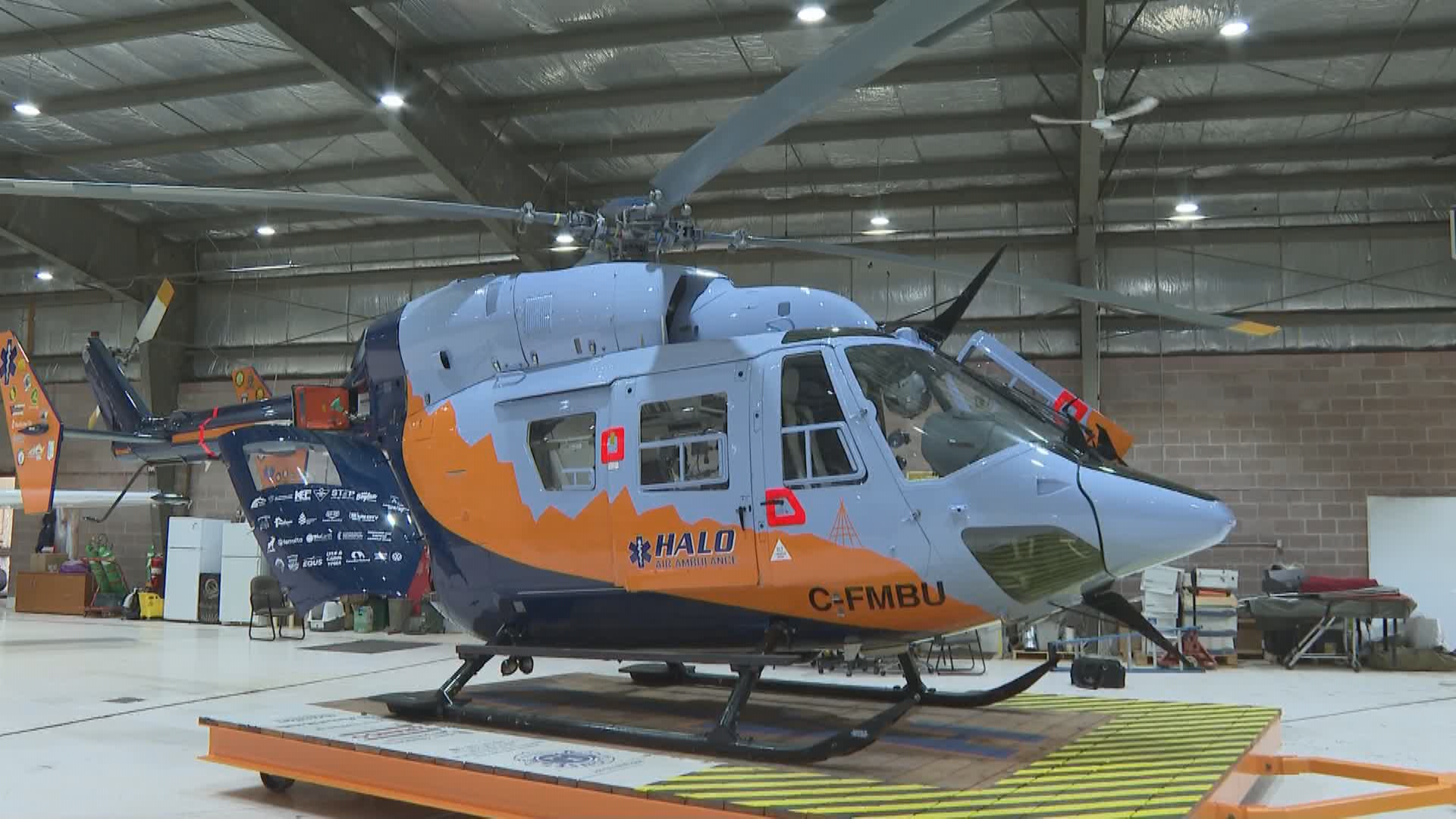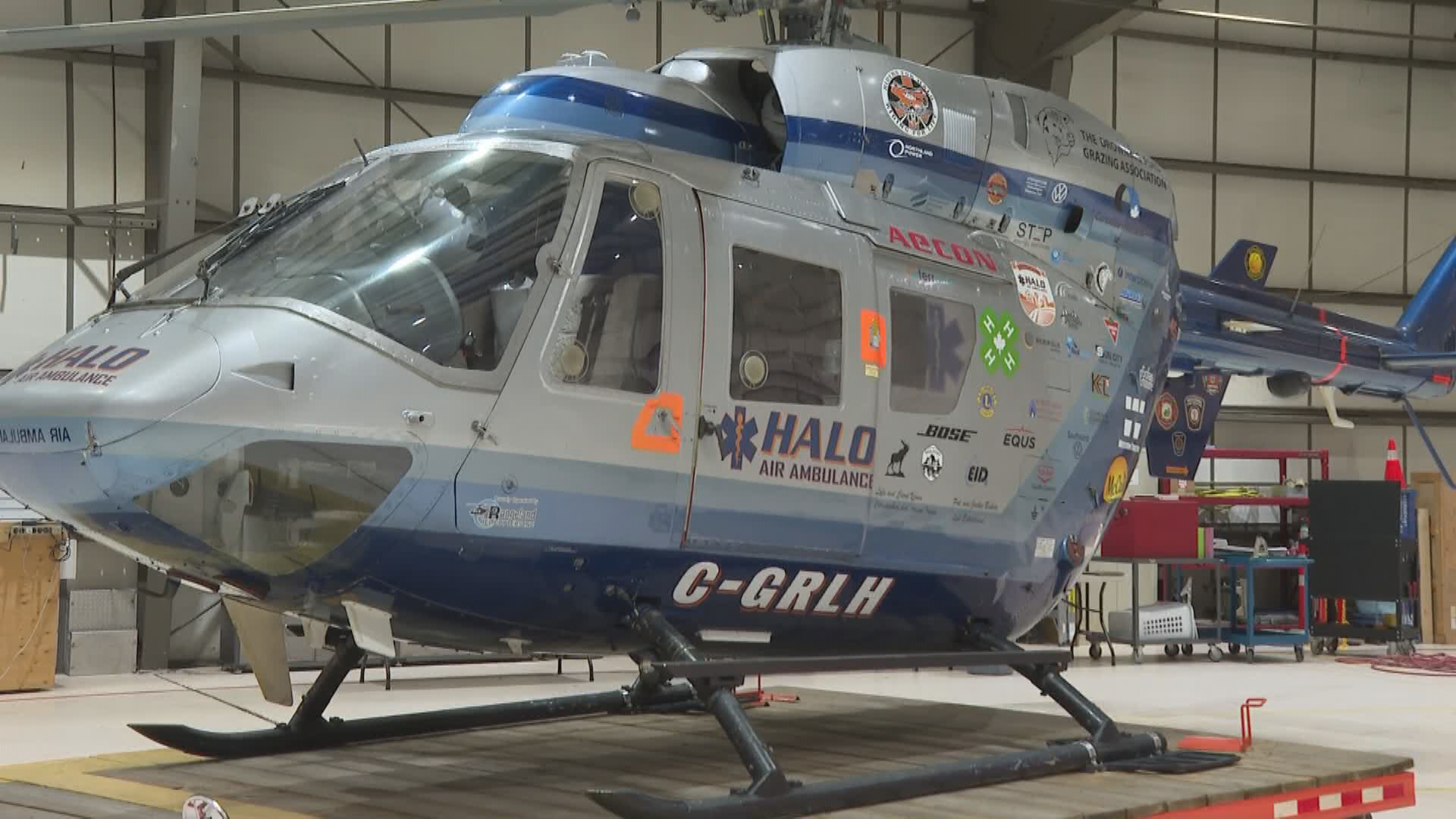For years, HALO Air Ambulance has been a lifesaving service in the skies above southern Alberta.
It’s a resource nobody wants to use, but when they do need it, it’s the most welcome sight in the world.
“Very grateful and will always be grateful for HALO and what they’ve done for my family,” said Aaron Fleming, whose daughter was rescued by a HALO crew in 2020 when on a ski trip in Elkwater.
“(HALO made sure) that we were able to continue planning family vacations rather than a family funeral.”
He says his daughter, who was 16 years old at the time, hit a tree when on the slopes and, if it wasn’t for HALO, things would have turned out drastically different.
“She would have died if it wasn’t for HALO.”
His daughter’s rescue came during a rough year for the air ambulance as they were on the brink of shutting down entirely.
“In 2020, when the announcement was that they would potentially have to close their doors due to no funding, it was something that tugged at my heartstrings,” said Fleming.
He had, earlier in the year, made a significant donation to HALO, believing it was too valuable of a resource to risk losing, but when HALO needed him, he and his family needed them.
“HALO saved her life when we were trying to save HALO.”
Now, five years after the organization was nearly grounded for good, HALO Air Ambulance has doubled its fleet with the addition of a new helicopter.
HALO-1 is the newest addition to the HALO Air Ambulance fleet of helicopters.
Jordan Prentice/Global News
“It’s a BK 117, which is the same helicopter we’ve been flying for years (but) it has bigger engines, so more performance,” said Paul Carolan, CEO of HALO.
He says being able to move as the crow flies, avoiding roads while cruising at over 250 km/h makes a huge difference when seconds can be vital to saving a life.
“In a perfect world, we would never fly, but that’s not the world we live in. We do live in remote and rural Alberta and we don’t have all the resources that the big centres have, so this is the way that we can get people where they need to go as quickly as possible,” said Carolan.
The new machine is a serious improvement for HALO, especially when operating in the arid summer conditions around Medicine Hat.
“It doesn’t fly any faster or any higher, but in hot temperatures or with heavy loads, it gives us better performance for landing on scene and landing at hospitals.”
It’s more than just being an air ambulance, however, as HALO’s range also keeps community paramedics in their towns for future emergencies.
“When that call comes in, we can get those advance care paramedics to the person and that has a byproduct of leaving that community paramedic in that community. Now, instead of having a long transport time to Medicine Hat, Lethbridge or Calgary, we land on scene, work with that team, take the patient and get them where they need to go but that paramedic and that ambulance stay in their community. So, if another call comes in, now you still have that resource.”
The new helicopter is going to take the name of HALO-1, becoming the primary ambulance for the team. Meanwhile, the older HALO-2 will be used as a backup if maintenance is required on HALO-1.
HALO-2 is the older aircraft with HALO Air Ambulance.
Jordan Prentice/Global News
Completing its first emergency call on June 29 in the Bow Island area, HALO-1 has officially entered the service.
“We can be there when the call comes in and truthfully, that’s all that matters,” said Carolan.

